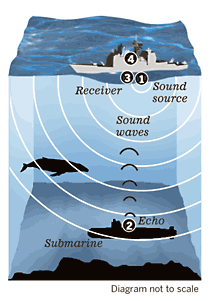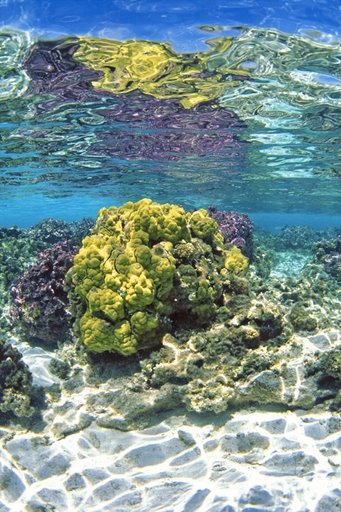Blog
News, updates, finds, stories, and tidbits from staff and community members at KAHEA. Got something to share? Email us at: kahea-alliance@hawaii.rr.com.
O'ahu Army Lease talking points
In 2021, hundreds of you, our supporters, submitted comments to the Army about what the scope of their EIS should be. We called for a future that prioritizes health, healing, and peace at home and abroad. Unfortunately, though their DEIS is lengthy (1,000+ pages), it does not meaningfully address any of the concerns we previously raised. Here are some points to consider, for either written or spoken testimony
No Public Speaking Allowed?
We attended the Honolulu scoping meeting on the Navy’s planned expansion of sonar and underwater munitions testing and training activities two weeks ago. We’re still working on processing the information and our thoughts about the process. In the meantime, we thought we’d share these thoughts from Uncle Jim on Moku o Keawe about their experience in Hilo:
From Uncle Jim Albertini:
Tonight’s (8/26/10) EIS Scoping Meeting on Navy expansion plans for Hawaii and the Pacific was more hardball than the Marines similar meeting of 2 days ago. (Then again, at the Marines meeting we had retired Marine Sergeant Major, Kupuna Sam Kaleleiki, to open the path with a pule and the initial public testimony.)
The Navy EIS personnel weren’t nearly as respectful of the right to public speaking and the community being able to hear each others concerns. Some of the Navy team were downright arrogant, insulting and contemptuous. Initially the Navy wasn’t going to allow us to bring our portable sound system into the Hilo H.S. cafeteria to hold a citizen public hearing. Finally with police presence brought in, the Navy yielded the last hour of the planned 4-8PM event to our citizen hearing.
Some of the Navy EIS team were blatantly rude in not listening to community speakers and carried on their own conversations. Before the public testimony, we invited all present to join hands in a pule and asked for mutual respect, and open minds and hearts.
The Navy refused to have any of their personnel take notes to make the public comments part of the official record of scoping concerns. Community people were very respectful of the Navy personnel as human beings, but the aloha spirit wasn’t returned by many of the Navy people present. Too bad.
Many of the Navy people were hard set to their format. Tour the science fair stations, and If you wanted to comment, put it in writing or type it into a computer. We were told over and over. This is not a public hearing. No public speaking is allowed.
Got Input for the Army on its Environmental Investigations? Apply by August 14!
From: Andrea
U.S. Army Garrison-Hawaii is soliciting community interest in creating a Restoration Advisory Board as part of the Military Munitions Response Program for two sites near the U.S. Army’s Pohakuloa Training Area. The motivation for the Restoration Advisory Board is to enable community participation in environmental issues on previously used military training sites.
Currently, the focus of the Restoration Advisory Board would be the remedial investigation of two response sites: the closed Humuula Sheep Station and the Kulani Boys’ Home.
The Board will be formed if enough community interest is expressed. The Board would be composed of community members, government representatives, and other stakeholders. The Board members would attend meetings and review and comment on plans and reports related to the investigation.
For more information or to request an application, contact:
Environmental Divison
MMRP Program Manager
Director of Public Works, USAG-HI
948 Santos Dumont Ave.
Building 105, 3rd Floor, WAAF
Schofield Barracks, HI 96857
Phone: 808-656-3109
Fax: 808-656-1039
*Applications must be postmarked or emailed by August 14!
They're not aiming for Palau...
From Miwa:

From the NY Times, “Hawaiians Shrug off Missile Threat“:
Now the Obama administration says North Korea could launch a ballistic missile in the state’s direction — possibly around the Fourth of July, according to the Japanese news media — prompting the United States military to strengthen defenses here…
People took comfort in the heavy, year-round military presence provided by several bases here but also wondered if it made the state more of a target.
Yes, it’s called irony, folks. And it’s why they aren’t aiming for Palau.
Hawaii County Council Passes Reso on DU: Clean 'em up first!
Mahalo to friends/activists on the Big Island! Ho‘omaika‘i ia! And thanks to everyone who submitted testimony and responded to action alerts–the resolution on depleted uranium passed without bad amendments–you helped make it happen!
From West Hawaii Today:
The council approved a resolution from Puna Councilwoman Emily Naeole that requests the U.S. Army to halt B-2 bombing missions and live firing exercises until it’s determined whether depleted uranium is present at the Pohakuloa Training Area.
Although the resolution does not carry the power of law, the council spent more than six hours Wednesday discussing it and listening to testimony from numerous residents in favor of it.
The council heard from Dr. Lorrin Pang with the state Department of Health who, speaking as a resident, painted a grim picture regarding the lack of information there is on DU levels on the island and the circumstantial evidence that depleted uranium may be responsible for a spike in new cancer cases.
From 2000 through 2004, Pang said 444 new cancer cases were reported on the Big Island, which is more than new cases from the other Hawaiian Islands.
A majority of the county’s new cancer cases were from Kona, where dust originating from PTA usually ends up because of wind, he said. “It is prudent a survey be done to put to rest our uncertainty about (the military’s) record-keeping,” Pang said. “Something’s cooking here on Big Island.”
Depleted uranium was discovered at PTA in 2006, which originated from spotting rounds in Davy Crockett weapons systems tested in the 1960s.
The council approved a few amendments to the resolution, including one from Ka’u Councilman Bob Jacobson that states the “U.S. military shall conduct a search of all records for firing of depleted uranium at (PTA) and all other Hawaii state military sites and release pertinent information to the public.”
An amendment from Council Chairman Pete Hoffmann, Kohala, to remove language in the resolution that requests the military to halt bombing missions and live firing exercises was defeated in an 8-1 vote, with Hoffmann the only one to cast a favorable vote. Hoffmann, who served in the military for more than 28 years, said he agrees the country should not be in Iraq, but because that is the case, the request in question would lead to inadequate training.
Other council members said the Army should find a different place to train until it’s determined if depleted uranium is causing problems for residents and military personnel.
Hamakua Councilman Dominic Yagong said the council’s favorable vote puts the military on notice “that you have to investigate.”
Army Col. Howard Killian told the council the military plans to have a citizen monitoring committee in place by the end of the month. South Kona Councilwoman Brenda Ford plans to introduce a resolution that requests Pang is placed on the committee as the council’s representative.

photo: The Davy Crockett Atomic Battle Group Delivery System fired on the Big Island (island breath post)
Say NY Times and Star Bulletin: Navy should comply with Environmental Laws
(graphic from abcnews.com)
The Supreme Court has taken up the question of whether the Bush Administration can exempt the Navy from laws protecting marine mammals from sonar, and media is chiming in. Both the New York Times and Star Bulletin have come out recently in favor of upholding environmental law when it comes to Navy training exercises.
From Op-Ed in today’s New York Times:
Environmentalists have long claimed that the Navy’s use of sonar for training exercises unduly threatens whales, dolphins and other acoustically sensitive marine creatures. The Navy has adopted some procedures to mitigate the risk but has resisted stronger protections ordered by two federal courts. The Supreme Court has now agreed to address the issue.
The justices will not try to determine the extent of harm but rather the balance of power between the executive branch and the courts in resolving such issues. In an effort to sidestep the courts, the Bush administration invoked national security to exempt the Navy from strict adherence to the two federal environmental laws that underlay the court decisions. The top court will now have to decide whether the military and the White House should be granted great deference when they declare that national security trumps environmental protection or whether the courts have a role in second-guessing military judgments and claims of fact.
The case at hand was filed by the Natural Resources Defense Council and other conservation groups to rein in Navy training exercises that use sonar to search for submarines off the coast of Southern California. The Navy says that its exercises pose little threat to marine life and that the training is vital to national security.
A federal district judge and a federal appeals court in California, after careful reviews of the facts, have found that the Navy’s arguments are largely hollow. Although the Navy likes to boast that there has never been a documented case of a whale death in 40 years of training, that may be mostly because no one has looked very hard. The Navy itself estimates that the current series of drills, conducted over two years, might permanently injure hundreds of whales and significantly disrupt the behavior of some 170,000 marine mammals.
No one has questioned that sonar training is vital to national security, and the federal courts have not tried to ban the training. They have simply tried to impose tough measures to minimize damage. The Navy objected to two proposed restrictions in particular — that it shut off its sonar when marine mammals are detected within 2,200 yards and power down its sonar under sea conditions that carry sound farther than normal.
High-ranking officers said these restrictions would cripple the Navy’s ability to train and certify strike groups as ready for combat. The appeals court, mining the Navy’s own reports of previous exercises, disagreed. It said the Navy, following earlier procedures, had already been shutting down sonars with little impact on training or certification.
It seems telling that the Navy has accepted the 2,200-yard safety zone for other sonar exercises. NATO requires the same zone, and the Australian Navy mandates a shutdown if a marine mammal is detected within 4,000 yards.
The federal courts have played a valuable role in deflating exaggerated claims of national security. Let us hope that the Supreme Court backs them up.
And, from our own Honolulu Star-Bulletin:
The Navy’s application for a new permit for sonar training exercises in Hawaii waters could be the last time it will need to go through the process, depending on a ruling from the U.S. Supreme Court.
Should the court agree with the Bush administration’s assertion that it has the authority to override laws that protect the environment and marine mammals, the Navy would no longer be required to seek the permits designed to minimize harm to ocean species.
The court is not expected to focus on a continuing dispute between the Navy and environmental organizations about the level of injury sonar causes to marine mammals.
Instead, justices will decide whether the administration, with the support of the military, can set aside enforcement of well-established law. The administration argues that protective conditions put in place by federal courts jeopardize “the Navy’s ability to train sailors and marines for wartime deployment.”
The claim is belied by the fact that the Navy has been able to conduct training while mitigating harm.
The case involves naval exercises off the Southern California cast in which a federal judge restricted mid-frequency sonar use and required it to be shut down when a marine mammal is sighted within 6,000 feet. In a similar ruling in Hawaii, federal Judge David Ezra established several guidelines, putting the range at 5,000 feet. The different requirements have frustrated the Navy, but they are due to variations in coastal waters and marine mammal populations.
While the California case was proceeding through the appeals court, President Bush exempted the Navy from the Coastal Zone Management Act. At the same time, an executive branch agency, the Council on Environmental Quality, granted an exemption of the National Environmental Policy Act, claiming an emergency situation. The Defense Department has previously claimed an exception for “military readiness activity,” as allowed under the Marine Mammal Protection Act.
Through these laws, environmental groups have been successful in establishing restrictions, showing evidence that sonar soundings have injured or led to the deaths of whales. Navy studies have shown probable harm, disturbance or death to 175,000 marine mammals. The Navy also says only 37 whales have died from sonar since 1996, but that doesn’t mean that other haven’t been killed without their carcasses being found.
(Photo: 2006 dolphin stranding, Mozambique.)
The administration’s crafty argument, however, is aimed at defining the scope of executive authority, which might be a gamble because the court has not been sympathetic to Bush’s attempts to stretch presidential power.
A ruling will have implications in Hawaii, where the Navy’s permit for sonar exercises will expire in January. Until the court’s decision in its next term, the public has an opportunity to weigh in with the argument that training can be conducted effectively while reducing the risk of harm to animals in the sea.
conservation plan = more impacts? we don't get it.
A short video we put together on the new draft of a 15-year plan for the future of the Northwestern Hawaiian Islands.* We’ve read all 1,200 pages of it, and reviewed it with experts everywhere from Sierra Club to Environmental Defense. Our conclusion? We can do much, much better.
Now, we’re seeking signatures on a petition asking for a better, stronger Plan for this fragile wahi pana.
The current draft is a plan for conservation which, inexplicably, actually expands the footprint of human activity in this pristine and uniquely Hawaiian coral reef ecosystem.
In the largest no-take marine reserve on the planet, this draft of the Federal/State plan is proposing the construction of a “small municipality” on Midway, new cruise ships, more tourists, increases in extractive research, new risks of invasive species introductions, exemptions for fishing, and opening of the area to bioprospecting. An expansion of military activities–including sonar, ballistic missile interceptions, and chemical warfare simulations–would be allowed to go forward with no mitigations. The plan also disbands the existing citizen advisory council, which is pretty much the only opportunity for members of the public (non-government scientists, advocates, cultural practitioners, and resource experts) to participate in decision-making. Yeesh.
Over 100,000 people from all over the world helped establish the Papahanaumokuakea National Marine Monument and the Hawaii State NWHI Refuge–perhaps the most visionary legal marine area protections in history. We need to ask government managers for a plan which upholds these strong protections. We should be working towards full conservation, NOT creating and formalizing exceptions to the rules. That’s our position, anyway.
If you agree, please take a few seconds to add your name to the petition. This last intact, endangered and uniquely Hawaiian coral reef ecosystem deserves a plan for its FULL conservation. Unless we show broad public support, protections we fought so hard for will be paper, not practice.
*The hearings mentioned in the video are over, but there is still one week left to make your voice heard. More information at www.kahea.org. Deadline is July 8, 2008.










